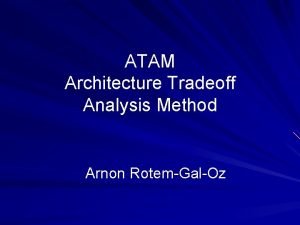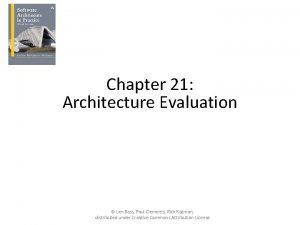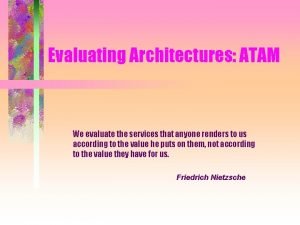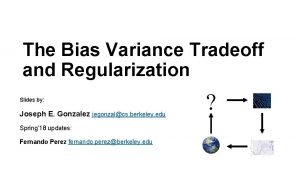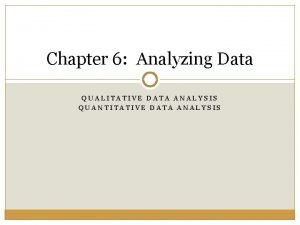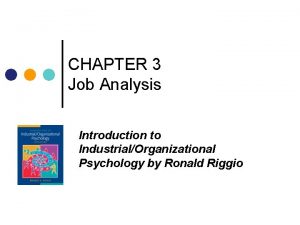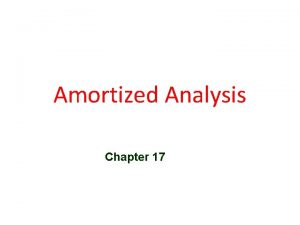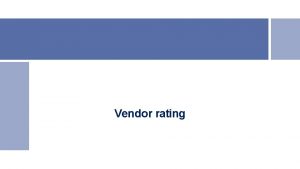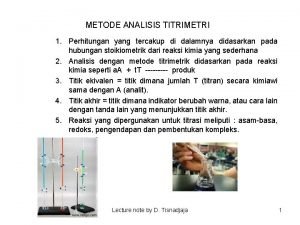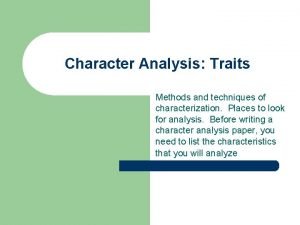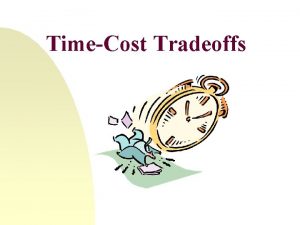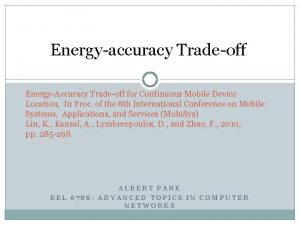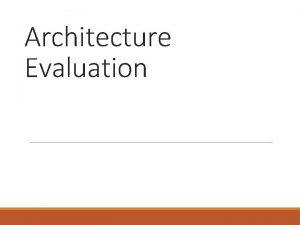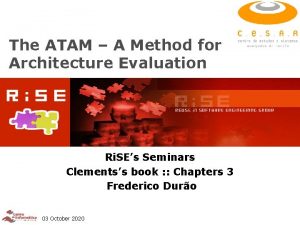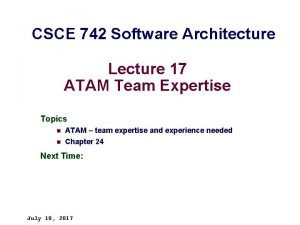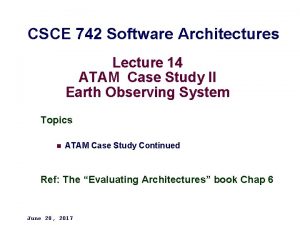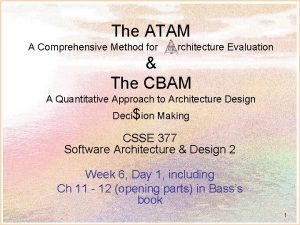Analyzing an Architecture Methods ATAM Architecture Tradeoff Analysis




















- Slides: 20

Analyzing an Architecture

Methods • ATAM – Architecture Trade-off Analysis • CBAM – Cost Benefit Analysis • Architecture Review

ATAM

ATAM Participants • Evaluation Team • Project Decision Makers – Sponsor, Customer, Management • Architecture Stakeholder – Developers, Users, Testers, etc.

Evaluation Team • • Team Leader Evaluation Leader Scenario Scribe Proceedings Scribe Timekeeper Process Observer Process Evaluator Questioner

Outputs • • Concise presentation of the Architecture Articulation of Business Goals Quality Requirements – collection of scenarios Mapping of Architectural decisions to qualities Identified sensitivity and trade-off points Set of risks and non-risks Set of risk themes

Phases of ATAM • 0 - Partnership and Preparation • 1 – Evaluation 1 -- 1 day – 2 TO 3 WEEKS BREAK HERE! • 2 – Evaluation 2 – 2 days • 4 – Follow-up -- 1 week

Evaluation Steps – Phase 1 • 1 - Present the ATAM • 2 - Present Business Drivers – Most important functions – Constraints – technical, economic, political – Business goals – Major stakeholders – Architectural drivers

Evaluation Steps • 3 – Present Architecture (~20 slides; 30 minutes) • 4 – Identify Architectural Approaches • 5 – Quality Attribute Utility Tree

Evaluation Steps • 6 – Analyze Architectural Approaches

Evaluation Steps – Phase 2 • 7 – Brainstorm and prioritize scenarios • 8 - Analyze Architectural Approaches • 9 – Present Results

CBAM

CBAM • • Goal of CBAM is quantifying decisions Utility – a measure of value Cost – to implement a given strategy Use outputs of ATAM • This is a subjective process!

Scenario • For each scenario of ATAM: – Generate a set of scenarios – The set has a range of responses – The response measure needs to be quantified

Assign Utility Values • This can be hard! • Look at plots in text (pg. 311) • Start by establishing worst-case and bestcase limits (0 and 100) • They also tried to find a current and desired value

Priorities • Prioritize the scenarios in order first • The add a weight for each one

Architectural Strategies • Expected value of the response – (Interpolate on the plot) • Effect on other attributes • Cost to implement

Benefit • Bi = S (bi, j * Wj) • bi, j change in response to in attribute j to strategy in attribute I • W is weight of scenarios

ROI • R=B/C

Summary • ATAM and CBAM provide structure • CBAM can be hard, since quantification is called for! • Next week we consider a less structured alternative.
 Atam utility tree
Atam utility tree Atam architecture evaluation method
Atam architecture evaluation method Atam architecture evaluation method
Atam architecture evaluation method Bias variance tradeoff
Bias variance tradeoff The key tradeoff featured in the compromise of 1877
The key tradeoff featured in the compromise of 1877 Menu atam
Menu atam Wax pattern in fpd
Wax pattern in fpd Computer architecture performance evaluation methods
Computer architecture performance evaluation methods Fact finding techniques in system analysis and design
Fact finding techniques in system analysis and design Energy method
Energy method Feedback analysis methods
Feedback analysis methods Legal research tools and techniques
Legal research tools and techniques Data analysis methods
Data analysis methods Methods of job analysis in industrial psychology
Methods of job analysis in industrial psychology Inorganic precipitating agents
Inorganic precipitating agents Method
Method Aggregate method amortized analysis
Aggregate method amortized analysis What are the objectives of input design
What are the objectives of input design Vendor rating meaning
Vendor rating meaning Contoh soal titrimetri
Contoh soal titrimetri How to analyze characterization
How to analyze characterization
